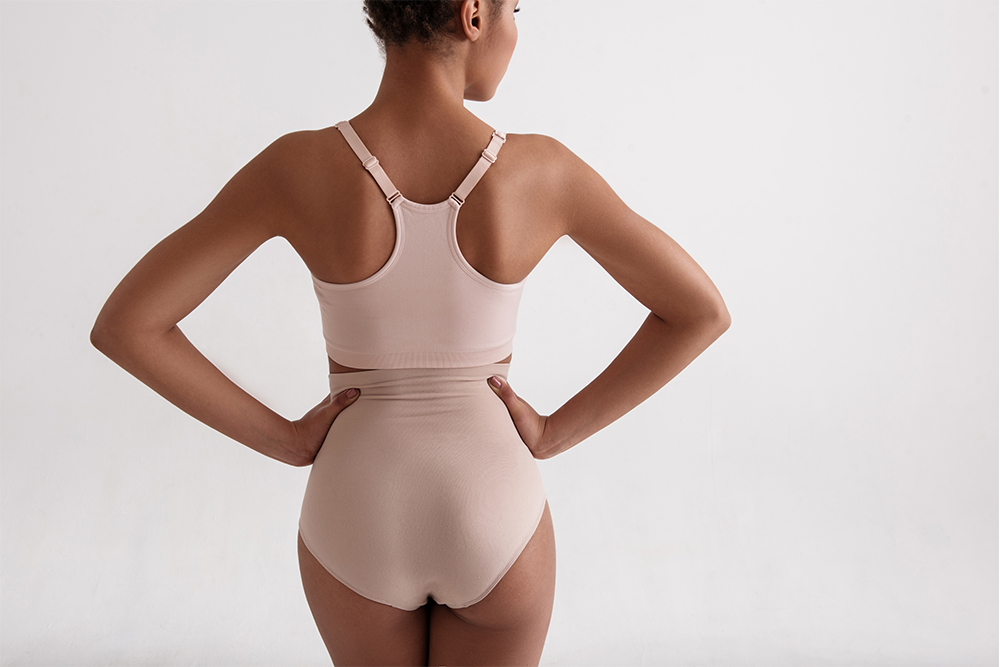These days, it seems near impossible to scroll through your Instagram feed for more than a few seconds before encountering a post about some new wellness trend or other. “This collagen supplement cleared my skin,” one might claim. “Micro-dosing is changing my life,” says another. But, as every influencer, celebrity, and moderately health-conscious person continues to share impressive before-and-after photos of their torsos and limbs, there’s one phenomenon that appears impossible to ignore: lymphatic drainage massage.
While the rhythmic, high-pressure body treatment has been lauded by celebs like Hailey Baldwin, Joan Smalls, and Elsa Hosk only in the last few years, lymphatic drainage actually dates back centuries and boasts a long list of health and beauty benefits. The massage technique has dramatically caught on in recent times and shows no sign of slowing in 2020, but, as more and more lymphatic drainage techniques and iterations become available to consumers, it’s important to understand not only how the practice works, but also in which circumstances it’s most effective.
You May Also Like: 8 Reasons Why You Should Try Lymphatic Massage
Understanding the Lymphatic System
The lymphatic system, a major part of the body’s circulatory system, is a network of organs, lymph nodes, lymph ducts, and lymph vessels that balances bodily fluid levels and protects from infections. “It’s also responsible for eliminating interstitial fluid and cellular waste (toxins) from the body,” explains Camila Perez, a Brazilian-born-and-trained lymphatic drainage specialist, who regularly works with the likes of Kim Kardashian and Bella Hadid.
The lymphatic system does this by producing lymph, a colorless fluid containing white blood cells, and moving it from tissues to the bloodstream. Drinking plenty of water is a great way to stimulate lymphatic movement and drainage naturally, but, as Perez notes, “lymphatic vessels and lymph nodes are very superficial, so they can receive stimulation by the touch as well.”
What is lymphatic drainage massage?
“People really don’t drink enough water, even though it’s very important for cleaning our systems out,” says Marina Baratashvili, a New York-based massage therapist, who was among the first to bring lymphatic drainage to the forefront of American wellness. “If you don’t drink enough water, the blood, with all of its toxins, just circles around in our bodies.” Through lymphatic drainage massage, though, providers like Baratashvili and Perez can manually clean the filters (lymph nodes) and stimulate the flow of lymphatic vessels, increasing the natural process of establishing homeostasis.
Using a lotion or oil, a lymphatic drainage massage therapist will run her hands over every facet of the body, always pushing in an upward direction in an “L” shape (made by index finger and thumb). Five or so minutes will be spent on each area, from the calves and backs of thighs to the stomach and eventually face, and, although the massage requires a lot of pressure, it’s by no means painful and typically feels very good. Every area of the body can benefit from lymphatic drainage since the lymphatic system runs throughout, but the legs and stomach are often the most prone to swelling. “As the lymphatic system is essential to digestion and fat absorption, the stomach is usually a significant concern,” Perez says.
What to expect from lymphatic drainage
Every body is very different, so naturally, lymphatic drainage can deliver varying results depending on the person, but most people notice an immediate response, physical and otherwise. The massage technique reduces swelling, improves digestion, stimulates blood and lymph production and circulation, and often delivers the visual benefits to go with it all. “It does depend on the amount of fluids retained and what’s causing it, but I would say, in general, you can feel a lot lighter and an exceptional sensation of well-being, even visually, for at least 48 hours after the treatment,” Perez advises.
Most clients who are seeking to reset and detoxify their systems will opt for monthly lymphatic drainage sessions, but others looking to manage weight or target cellulite can do it as often as once a week. “People think long sessions are the best, but they’re really not,” notes Baratashvili. “But our bodies are smart, and if you touch too much, the body will think someone else is doing its job and will stop doing it for itself.”
How to prepare for lymphatic drainage and optimize results
It should come as no surprise, but the best way to get ready for lymphatic drainage and maintain results after treatment is to drink lots and lots of water. “As everything drains through the urinary system, water is essential!” says Perez. “Be hydrated before your session, and keep drinking water to help flush out the toxins.” Obviously, there are myriad theories about how much water we should be drinking on a daily basis, but Baratashvili recommends two liters before 2pm and an additional liter between 2pm and 5pm. She also warns that too much water right before bed can actually have an adverse effect, as it will stay in the muscles overnight and result in bloating and heaviness the next morning. Beyond that, the best thing clients can do before and after lymphatic drainage, as well as just generally, is to maintain a proper diet and exercise regularly since movement stimulates lymphatic flow.

















